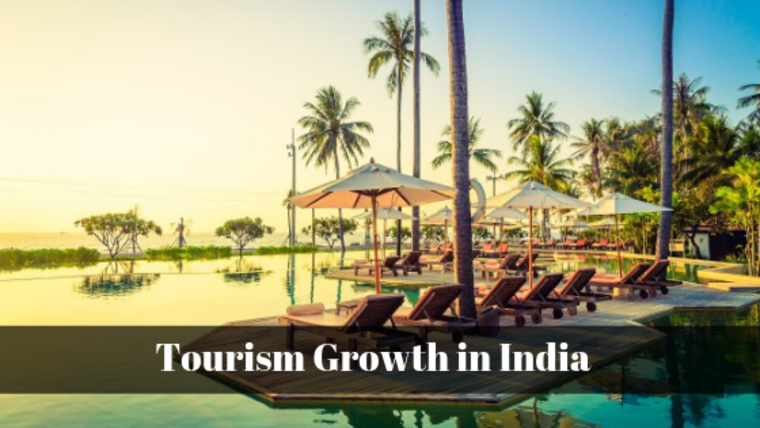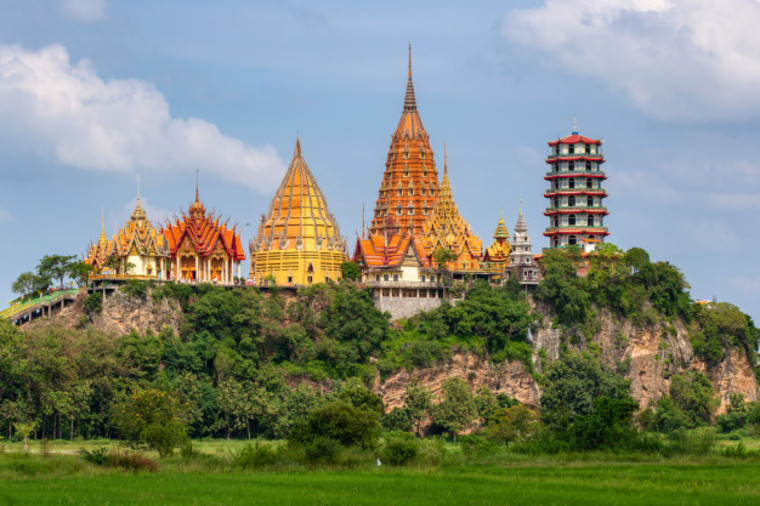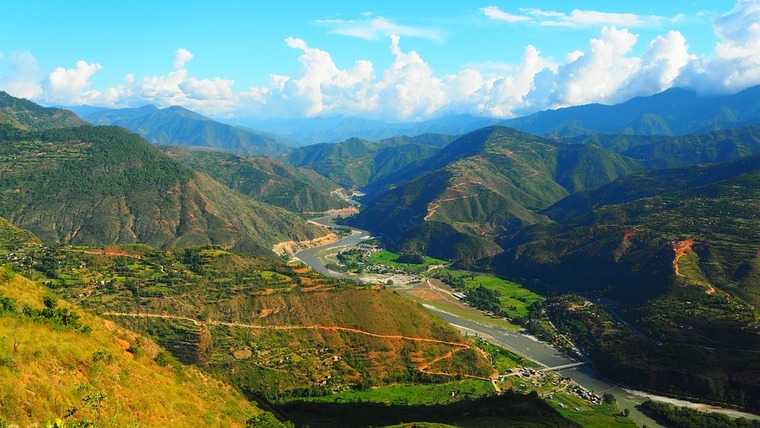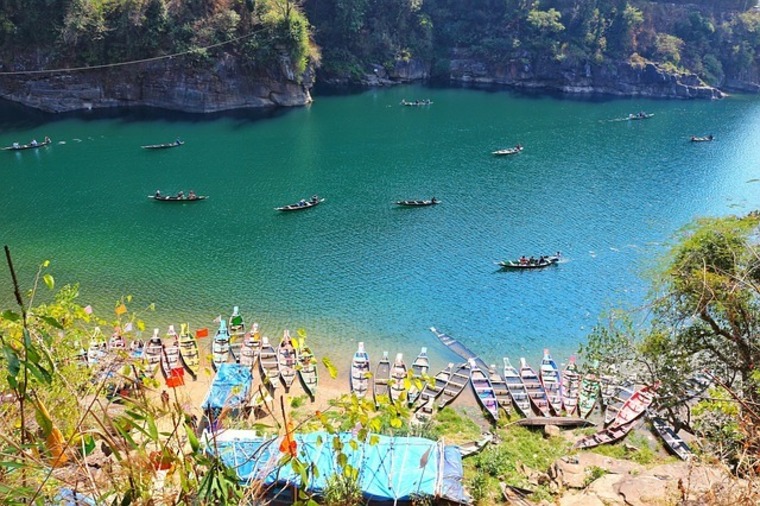Tourism Growth in India
For a country that is surrounded by the Himalayas to the north, the Indian Ocean to the south, The Bay of Bengal to the east, and the Arabian Sea to the west, India quite hasn’t tapped into the full potential of tourism. Even the tourism industry is the largest service sector in India, the tourism growth in India is something that is still a work in progress.

With 37 UNESCO heritage sites and a land blessed with rich heritage and cultural diversity, each region in India has a unique story to tell. People have different expectations for tourism. Some prefer beaches, while others may like forests, some other people may be into deserts, etc. No matter what the preference, India has different regions to cater to everyone’s expectations.
As per the WTTC (World Travel and Tourism Council), about 9.2 percentage of India’s GDP in the year 2018 came from Tourism. From just over 2 million tourists in 2000 to over 42 million jobs in the Indian travel and tourism industry in 2018, and 10 million foreign tourists visiting the country in the same year, the growth of tourism in India has been steady. Despite these good tourism growth statistics, India has a long way to go to fully exploit this domain.
Tourism History in India
The idea of tourism can be dated back to the beginning of the human race itself. In ancient India, tourism was mainly for the purpose of commerce and trade. Emperors and kings such as Ashoka and Harsha travelled to different destinations and established trade routes. Along their journey, they implemented rest houses, stations for food, as well as developed the roads for the comfort of the travellers. Later on, a foreign form of tourism started when Persians, Portuguese, and a few others visited India for the purpose of commerce. The purpose soon starting changing into leisure, religious, and so on.
It was until after the independence in 1945 that an official tourism planning started by the government. The Indian Tourism Development Corporation was implemented in the year 1966 to improve the infrastructure and begin the focus on evolving tourism in India. Following this, the first tourism policy was formed in 1982, and the main focus of it was to improve tourism in order for economic growth. Based on this, in 1986, the Planning Commission of India started the National Committee on Tourism to start with the plans. As a result, over the years there have been several 5-year plans to make India into a global tourist attraction.
Tourism Development in India
The growth of tourism in India, although steady, is quite not up to the expectation. For a country with a population of 1.25 billion people, that is a minimum of 1.25 billion tourist visits. India, as a result, is doing great when it comes to domestic tourism with over 1.6 billion tourist visits to other states. However, when it comes to international tourists, this isn’t the case. The FTAs ( Foreign Tourist Arrival) in India is way below other developed countries. With an FTA of just over 10 million, it is almost one-eighth of what France has. Granted that this could be due to the free travel between Schengen countries, but there are several non-Schengen European countries, as well as other nations, such as Mexico, Turkey, Russia, etc that have FTAs more than twice that of India. One of the main reasons for this is the stringent immigration rules in India. Apart from this, other reasons that restricted a full flow of tourism in India were underdeveloped travel infrastructure, poor sanitation, as well as concerns about safety. These are aspects that every tourist look for while visiting a country.

However, thanks to several initiatives by the Govt. of India, these issues have almost completely disappeared. Campaigns such as Incredible India, Atithi Devo Bhava, India has become a welcoming nation to tourists from all around the world. Thanks to the e-visa facility for tourist purposes, travellers from more than 100 countries can get into India with ease. There are even countries who do not need a visa for India. With the government investing heavily in tourism, as well as easing the regulations on FDI (Foreign Direct Investment) allowing for 100%, the Indian tourism industry has started to flourish significantly.
Scope of Tourism in India
The future of tourism in India is golden. From earning 27 billion USD from tourism in 2017, the earnings are expected to be around 50 billion USD by the year 2028. With a large scale development being initiated, India aims to be at the top of the tourism economies only behind China, US, and Germany. As per the expectations, the travel and tourism industry’s contribution to the Indian GDP will jump from around 200 billion in 2017 to a massive 424 billion by 2027. A large number of countries have tourism as their main source of income. This has instigated the Indian government to give a larger focus on tourism. India’s route to be becoming the largest world economy can only be accomplished by fully realizing the potential of tourism.
For full tourism growth in India, we need to address the different types of tourism that exists in India to its full possibility. Tourism is a sector that has its branches in almost every other industry. There are numerous types of tourism that exist in India. For the main types, the scope of tourism in India is broadly classified into the following-

Medical Tourism
Medical tourism in India is a billion dollar industry that is at its peak. India is a major destination for people around the world seeking medical treatment. Due to the medical sector being backed and promoted by the government, this has flourished significantly in the last few years. By 2020, the income from medical tourism is expected to be around 9 billion USD.
Even in the US, most of the people working in healthcare are Indians. As a result, there is no shortage of skilled Indian medical workers in the world. Couple this with the low-cost, high-quality healthcare in India and English speaking professionals, you get the perfect recipe for excellent medical facilities. This is what attracts tourists. Instead of paying almost 4-5 times the medical expenses in India, in their country, they can obtain a better, if not equal, level of service in India. For example, open heart surgery costs up to 70000 USD in the UK. And, the same procedure can be performed in India for a maximum of 10000 USD. Due to massive differences in the costs, there is a large influx of tourists visiting India for these purposes.
Eco-Tourism
In layman term, Eco-tourism is simply the form of tourism in which a tourist visits a place without disturbing the environment and respecting the local culture and people. Eco-tourism in India is a new approach taken to preserve the ecosystem and heritage. This type of tourism is largely beneficial to the local people. By directly involving in this, they ensure that the environment and natural resources are protected.
In India, the hotspots for this are common in the western and eastern ghats, Himalayan areas, Kerala, Northeastern states, Andaman and Nicobar islands, and Lakshadweep. The importance of eco-tourism is significantly high. To maintain the balance of the ecosystem, it is necessary to preserve the flora and fauna, especially those of endangered species. With an increase in tourists, these are threatened. As a result, the government has initiated eco-tourism to counter this issue.
Religious Tourism
The birthplace of 4 major religions, namely Buddhism, Hinduism, Jainism, and Sikhism, pilgrimages have been a part of the country since early ages. Along with these, due to the invasion by the Mughals, and Portuguese and French colonializations, imprints of other religions like Islam and Christianity have been established in India. Tourism to monasteries, temples, mosques, churches, as well as other religiously significant places includes religious tourism. Until recently, this form was mainly domestic. However, due to recent developments, these sites have started attracting foreigners. Most of the tourism in this domain has been to the state of Tamil Nadu, known for its ancient temples, statues, and caves, etc.
Cruise Tourism
With a large capacity for development, cruise tourism in India is an upcoming industry. Being the most luxurious of the world’s tourism industry, its effect in India has been limited due to several reasons. However, recent initiatives and developments have opened up a pathway to improve this sector. Cruises are basically ships or boats that provide special amenities like pools, hotels, restaurants, etc along with the journey from one destination to another. As of now, cruise tourism is limited to river tourism, and other forms of domestic tourism with cruises mainly operating between Mumbai-Goa, as well as to Maldives, Lakshadweep, and a few other places. River tourism in India can be seen in the river Ganges, and in the backwaters of Alleppey in Kerala.
Adventure Tourism
Being a modern form of tourism targeting adventure enthusiasts, adventure tourism involves exploring and travelling to remote areas and exotic locations. These activities can include trekking, white water rafting, skiing, surfing, rock climbing, skydiving, and so on. India, being very diverse in terms of even terrains and climates makes several types of adventure tourism possible. The adrenaline pumping nature of this attracts a large number of tourists from all over India as well as the world. The most notable mentions are Uttrakhand, Himachal Pradesh, The Himalayas, Ladakh, etc.

Wellness Tourism
Similar to healthcare, India is a well-known hotspot for spirituality and wellness. With an environment that enhances tranquillity, India attracts quite a number of people for various activities that are focused on improving one’s health and wellness. Body massages, yoga, meditation training, nutrition programs, etc are a few of the services under this category.
Cultural Tourism
One major thing that separates India from other countries is its rich culture and heritage. And this is also one of the main reasons why tourists visit the country. With several fairs, festivals, architectural sites, and so on, the cultural tourism in India is booming and is always going to be a crowd puller. Being ruled by several rulers in the past, they all left behind a piece of their history and heritage leaving an impact on the country. As a result, every region in India has a different array of culture, food, music, and tradition. Some of the major states for these are Tamil Nadu, Uttaranchal, Uttar Pradesh, etc.
Leisure Tourism
Known for the coastal lines, hill stations, and lakes, people visiting India to enjoy these come under the category of leisure tourism. Even though a significant amount of this is domestic, it certainly does attract several foreigners too. The French colony of Pondicherry and the Portuguese influenced Goa are two of the most visited places for its beaches, attracting several foreigners. Mount Abu, Kullu-Manali, Ooty, Mahabaleshwar, etc are famous hill stations that attract a lot of domestic tourists.
Apart from these, there are a few other types of tourism that exist in India. However, since these are the most important ones, future tourism growth in India in these sectors can increase the statistics significantly.
Impact of Tourism in India
The development of tourism is something that affects the entire nation. The impact of tourism on a country is much more than just revenue. Directly or indirectly, tourism influences a number of sectors as well as key areas such as environment, heritage, infrastructure, economy, employment, etc. The following are the 2 major areas that are grateful to tourism for their development.
Economy
The impact of tourism on the economy of India is a major one. Currently, the amount of GDP from tourism is more than 9 per cent. That is quite a significant number which is still climbing. With over 10 million international tourists visiting the country, the FEE (Foreign Exchange Earnings) has reached over 275 million USD in 2018. These numbers are expected to grow at a rate of about 9.4% per year. In a few years, the economic impact due to the growth of tourism will usher India to become one of the most developed countries in the world.
The impact of tourism on Indian economy can be classified in 3 different ways namely, direct, indirect, and induced. The direct impact, as the name suggests, refers to the areas where the economy is directly affected by tourism. These include sales from the accommodation, travel, food, entertainment activities, as well as other sectors that involve the tourists spending directly. Indirect economic impacts or secondary tourism impact on the economy are due to other factors which affect tourism indirectly. They are also affected by sales of additional services or products that do not directly affect tourism such as investments, commissions, employee wages, buying raw materials for hotels and restaurants, etc. Indirect contribution accounts for a larger portion of the revenue from tourism. The third and last type, Induced spending is simply the recirculation of money within a region. When a tourist spends money on anything, it undergoes a multiplier effect which goes into the local economy. Ie, if a foreigner spends 100 dollars on a hotel, the hotel owner again spends 10 dollars on food, another 10 for groceries, another 10 for cleaning, and so on thereby spending it within the local community.
Employment
The impact of tourism on employment generation is significantly high. With every 1 out of 10 people working in the tourism sector, the tourism industry accounts for about 10 per cent of the total jobs. To be precise, this is actually a subset of the effects of tourism on the economy. Directly or indirectly, there is a large number of people working in the sector. Direct employment refers to the people working in the tourism sector directly, such as travel agents, ticketing officers, tour guides, etc. Indirect employment is used to describe the people in jobs such as manufacturing vehicles used in tourism, restaurants providing food served to the tourists, etc. As of 2018, there are almost over 40 million Indians working in the tourism industry. Another interesting fact that shows the tourism impact on employment is the employment multiplier effect. According to this, a person directly involved in the field creates a multiplier effect to produce several other jobs. For example, let's say a person works as a tour guide. Now, while he is on a tour, he will have to eat food, buy clothes and so on. As a result, this creates an opportunity for someone else to start up a clothing store or a restaurant thereby increasing employment opportunities.
Government Initiatives to Develop Tourism
To ensure that India reaches its true potential for tourism, the Govt of India has implemented several policies over the years to encourage and develop tourism. Some of the main government initiatives to promote tourism in India are as follows -
Incredible India
The ‘Incredible India’ campaign is one of the most famous initiatives by the Indian government. Started officially in 2002, this campaign has made Indian tourism quite the household name in all corners of the world. The initial phase of the initiative was to increase the number of foreign travellers by promoting India for its culture, history as well as wellness activities such as yoga, and spirituality. As a result of its positive reception, the campaign was renewed as ‘Incredible India 2.0’ in 2017 which focuses more on niche tourism sectors such as heritage, cruise, adventure, as well as medical tourism.

Atithi Devo Bhava
To complement the ‘Incredible India’ initiative, the Indian government initiated another campaign known as ‘Atithi Devo Bhava’ which translates to ‘guest is god’. Released in 2008, the purpose of this was to educate and enlighten the local population on good behaviour and etiquette while welcoming foreign tourists to ensure that the tourists feel welcomed. The campaign also provided training to individuals directly dealing with the tourists, such as police, immigration officers, taxi drivers, tour guides, etc.
Adopt a Heritage
Released in 2017, the ‘Adopt a Heritage’ scheme is a policy focused on preserving and protecting the heritage. Through this, the government encourages parties from the private or public sector to adopt a monument or heritage site, and ensure the development and maintenance of these. These include providing drinking water to tourists, keeping the area clean, surveillance, and so on. Since this is a win-win scenario for both the government, as well as the volunteers, it saw an overwhelming response with several monuments and heritage sites being maintained by external groups.
E-Visa
The implementation of the e-visa scheme in 2014 has significantly helped the growth of tourism in India. Previously, due to strict visa rules, tourists often found it cumbersome to visit India. However, ever since the release of the e-visa, tourists can simply apply for the visa on an online portal, thereby making it extremely straightforward to get a visa. Initially, only 44 countries had access to these, but recently this has been increased to almost 165 countries. Even though currently there are e-visas in the form of tourist visa, medical visa, and business visa, the government has already started initiatives to expand this.
Swachh Bharat
The Swachh Bharat (Clean India) mission has significantly helped in improving the number of visitors to India. Previously, one of the reasons for the low statistics in terms of foreign arrivals was the lack of good sanitation and cleanliness in several areas of the country. Launched in 2014, and recognized as the largest behaviour change initiative in the world, this campaign focused on making India a cleaner country.
The development of the tourism industry is one of the hurdles that stand in front of India and true greatness. With numerous benefits coming from improving tourism, it is a vital element that needs to be focused on. However, despite the government’s role, it is also the duty of the citizens of India to help to improve this and grow tourism in India. Even though foreign tourism is the one generating large revenues, domestic tourism is equally important. After all, it is a necessity to discover your own backyard.
21 Jul, 2019 By rifahth ms . Posted In Career. Tagged travel and tourism career, Travel Industry Growth, Tourism Scope.